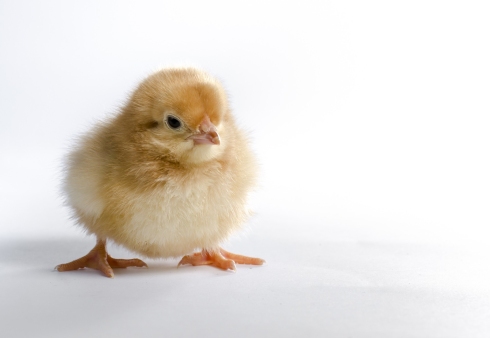
From fires and floods to a global pandemic and a president who refused to accept reality, 2020 will be remembered as a year most of us would probably rather forget. The pandemic actually benefited animals in some ways; circuses had to cancel public performances, for instance, fewer horses were run to their deaths on racetracks, and wild bees enjoyed cleaner air.
And the COVID-19 virus put more attention on the international wildlife trade, since markets selling live animals have been linked to the spread of disease. Even the fur industry was impacted.
Although 2020 was in many ways a year of injustice—let us never forget the murders of George Floyd, Breonna Taylor, Mannie Ellis, Andres Guardado, and so many other people of color at the hands of police—the past 12 months have also offered some reasons to celebrate. Here’s a look at a dozen of the top stories for animals this year.
1. Judge says vegans deserve same legal protection as religious people (January)
The year began with an encouraging decision by a UK judge, who said he is “satisfied overwhelmingly” that ethical veganism meets the criteria to qualify as a philosophical belief. “It is cogent, serious and important, and worthy of respect in democratic society,” said judge Robin Postle, ruling that ethical veganism meets the criteria required for it to be a philosophical belief protected under the Equality Act 2010. The Act makes it illegal for someone to be discriminated against because of protected characteristics, including religion or belief, race, sex, age, and physical ability.
The case was brought by Jordi Casamitjana, an ethical vegan, who said that his employer, the League Against Cruel Sports (LACS), fired him after he told his colleagues that the organization’s pension fund was being invested in companies involved in animal testing. Jordi eventually agreed to a settlement with the LACS and wrote a memoir about his experiences, Ethical Vegan: A Personal and Political Journey to Change the World, which was published this month. He says the LACS has since changed its auto-enroll pension arrangements to make them “ethical.”
2. France moves to ban mass live-shredding of male chicks (January)
Among the dirtiest secrets of the egg industry is that every year it kills 7 billion of the male chicks it breeds shortly after they hatch. And one of the most widespread methods for killing the chicks is to dump them in machines called macerators—horrific devices that shred the birds to pieces while they are still conscious. Animal advocates worldwide have been agitating for an end to this practice for decades, and now France will become one of the first countries to halt it when the ban goes into effect sometime in 2021.
3. Mexico bill to ban cosmetic testing on animals passes first stage (March)
With each country that outlaws cosmetics testing on animals, the world grows one step closer to a global ban on this insidious practice. Mexico announced this year that its Senate had voted unanimously to ban such testing. If the law passes, it will make Mexico the 40th country (and the first in North America) to prohibit testing cosmetics on animals. The bill will next be considered in the lower house in the Mexican legislature, the Chamber of Deputies.
4. Chicago bans horse-drawn carriages (April)
As of January 1, 2021, Chicago will join many other cities around the world that have abolished the use of horse-drawn carriages. These carriages, which often take tourists through busy traffic in all kinds of weather, have meant tremendous suffering for horses. “We’re very thankful,” said Jodie Wiederkehr, executive director of the Chicago Alliance for Animals, a grassroots organization that has been agitating for an end to the horse-drawn carriage trade for years. “We’re very proud of our grassroots work. We did all this work on our own time with no pay.”
The City Council approved an ordinance to halt the issuance of new licenses and prohibit the city from renewing any of the 10 existing carriage licenses, which will expire at the end of the year. Read my interview with Jodie here.
5. Calgary Stampede cancelled (April)
One of the first signs of the year that the coronavirus pandemic might offer a silver lining to animals came with the announcement that there would be no Calgary Stampede in 2020. Canada’s century-old event attracts more than a million visitors a year who come to see a wide variety of rodeo-style events, including bull riding, steer wrestling, and the notorious chuckwagon races, which have killed more than 70 horses since they began keeping track in 1986. Unfortunately, we’ll probably see a Calgary Stampede event in 2021.
Also in April, news came that the coronavirus would mean the cancellation of the running of the bulls spectacle, held every July in Pamplona, Spain.
6. Thanks to sheltering in place, animal shelters are empty (April)
Many people saw the era of social isolation as the ideal time to rescue a dog or cat, leading shelters across the country to report a significant increase in the number of animals they were able to adopt out or place in foster homes. “Adoption rates have skyrocketed,” said one shelter administrator. “Dogs are being adopted quickly and all the dogs we sent into temporary foster homes [about 70] when we closed in March were adopted.” Rescue groups are seeing a similar increase. Foster Dogs Inc., a New York-based nonprofit that helps get dogs out of shelters and into foster homes, says that last year they had about 140 applications a month; that increased to 3,000 this year.
7. Could lockdown be the death of bullfighting in Spain? (May)
Bullfighting was already struggling to remain relevant when the coronavirus hit Spain this year. Long a target of animal rights campaigners, the blood sport attracts fewer and fewer spectators, especially among young Spaniards, who question the link between “culture” and the killing of bulls (a poll in May found that nearly half of Spaniards want bullfighting banned). With the country on lockdown, matadors and torture fans alike were forced to stay home for much of the year, which was a huge economic blow to the industry. It could be that the coronavirus will do what animal rights activists have not been able to, and the bullfighting industry has asked the government for financial assistance. Click here to add your name to the petition urging Spain not to use public funds to subsidize bullfighting.
8. Australia’s ban on animal testing for cosmetics comes into effect (July)
Perhaps you heard that on July 1, 2020, Australia’s Industrial Chemicals Act 2019 came into force. The Act restricts the use of new animal test data for cosmetics safety testing. From this date, any new industrial chemicals solely used in cosmetics cannot use new animal test data to prove safety, whether the chemicals are being manufactured in or imported into Australia.
While this sounds great, in practice the country falls short on a total animal-testing ban. For example, in the case of multi-use substances used in cosmetics as well as other products such as household cleaners, paints and air freshener, companies may still submit new animal test data under certain circumstances. It also only applies to chemical ingredients used in cosmetic products, not the products themselves. And it permits products sold in China, where tests on animals are mandated by law for imported and special-use cosmetics, to be sold in Australia, provided companies also demonstrate equivalent non-animal test data where appropriate.
9. Colombia to become first South American country to ban animal testing for cosmetics (August)
A stronger ban on animal testing may be the one passed in Colombia this year and set to take effect in 2024. While that’s a long time to wait and will mean the suffering of many more animals, at least this one applies to ingredients and cosmetics products, regardless if they were imported or manufactured in Colombia.
10. Poland, the world’s third largest fur producer, votes to ban fur farming (September)
For years, Poland has had the dubious distinction of being one of the biggest killers of animals for fur (an estimated 6 million minks), ranking just after China and Denmark. Campaigners in Poland have long agitated for the closure of Polish fur farms, and they hope to secure a victory soon. In September, photos and video footage taken by an activist working undercover on a Polish mink farm were released and revealed appalling suffering. Soon after, a bill came up in the lower house of the Polish Parliament—and supported by the country’s ruling party—that advanced animal protection legislation to ban breeding animals for fur as well as ritual slaughter for exports and the use of wild animals in circuses.
Not everyone in the Polish government supports the bill, however, and it’s gotten quite a bit of pushback from the agricultural industry, which fears it could somehow hurt the meat trade, and from those who see fur farming as a cultural issue. The bill next goes to the Senate, though sadly the draft legislation for the ban does not include rabbits. In November, Polish President Andrzej Duda said he strongly opposes the ban.
11. “Buddy,” the beefalo who escaped slaughter, still on the lam (November)
Yes, there were bigger news stories of the year—stories in which more animals were affected. But the saga of a lone beefalo (a cross between a cow and a buffalo) captured the public’s imagination and had even meat-eaters advocating for his freedom. It began on August 3, when the beefalo later dubbed “Buddy” escaped from a transport truck as he was being moved into a Connecticut slaughterhouse. Eluding all attempts to catch him, Buddy roamed the forested hills of Litchfield County and was big news by the end of the month. Plymouth police used various traps and drones, but Buddy outsmarted them. In September, the Plymouth police union set up a fundraiser to buy Buddy from the farmer who “owned” him and thus ensure the animal would not be sent to slaughter. The police say that Buddy will go to a sanctuary for farmed animals in Florida—if they ever catch him.
12. UK dairy farms have a year to stop killing male calves (December)
A cruel and common practice in the dairy industry is to kill newborn male calves, since they don’t lactate. New rules mean the UK’s dairy farmers will have until the end of 2021 to prove they no longer do this. Advancements in technology mean farmers can use “sexed semen” to reduce the number of male calves born. An estimated 60,000 male calves are now killed on-farm in the UK every year.
***
This was also the year that activist Regan Russell was killed. Regan had been campaigning for animal rights since 1979 (she was also active for women’s rights and the Black Lives Matter movement). On the morning of Friday, June 19, 2020, she was attending a peaceful demonstration outside a pig slaughterhouse in the Canadian city of Burlington, Ontario. She was standing outside the slaughterhouse entrance—waiting to give water to pigs being brought in on one of the hottest days of the year—when the driver of an animal transport truck suddenly accelerated, turned in her direction, and ran her over. “He went straight at her,” said one witness.
Regan’s death came two days after the passage of Bill 156, ag-gag legislation intended to prevent activists from, among other things, showing compassion to thirsty pigs by giving them water as they are transported to slaughter. After a “comprehensive investigation,” local police determined that the truck driver did not hit Regan intentionally, and he was charged with careless driving causing death—basically a traffic ticket. Regan’s death is the subject of a new documentary short by Earthlings filmmaker Shaun Monson, There Was a Killing.
***
Other stories of the year worth noting:
Golden Globes go vegan (January)
Cows communicate using unique voices (January)
12 rabbits rescued from medical testing laboratory (January)
Borden files for bankruptcy (January)
Ben & Jerry’s will no longer claim their ice cream comes from happy cows (January)
U.S. states join global push to ban animal-tested cosmetics (February)
13-year-old animal activist Genesis Butler named Marvel hero (February)
Maryland ban on sale of dogs, cats in pet stores upheld (February)
Deer rips into hunter’s face (March)
Cow has avoided police capture for months in South Florida (March)
Canada Goose will stop using new fur (April)
China signals end to dog meat consumption by humans (April)
Slaughterhouses close due to COVID-19 (April)
Shenzhen becomes first Chinese city to ban consumption of cats and dogs (April)
USDA agrees to limit wildlife kill program in 10 California counties (April)
Former pork farmer rescues pigs now (April)
Duck market closes (May)
Alderman moves to close legal loophole in Chicago’s puppy mill ordinance (May)
Dutch MPs vote to close mink farms after virus cases (June)
GlaxoSmithKline halts its use of near-drowning test (June)
China increases protections for pangolins (June)
Dolphins learn how to use tools from peers, just like great apes (June)
Ban on sale of animals in pet stores passes New York Senate (July)
Lockdowns spared millions of animals from becoming roadkill (July)
San Francisco fur ban upheld as challenge is dismissed (July)
2 rescued pigs honor the memory of slain animal rights activist Regan Russell (July)
Reno City Council bans dog and cat sales (July)
Germany bans sow stalls (July)
Ringling’s retired circus elephants to move to conservation center (September)
Grizzly bear kills hunter (September)
Nordstrom to stop selling fur and exotic animal skin products (September)
Governor signs bill banning sales of dogs, cats, and rabbits in California (September)
Czech Republic bans cages for egg-laying hens (September)
France to ban use of wild animals in circuses, marine parks (September)
France to ban mink fur farming (September)
Clothing store Winners going fur-free across Canada after animal rights protests (October)
San Antonio bans pet store sales of dogs from breeders (October)
Israel moves to ban ‘immoral’ animal fur trade (October)
World’s biggest fur auction house plans to liquidate assets (November)
Turkey’s animal rights legislation underway (November)
Fur industry faces uncertain future due to Covid (November)
Gray wolves will be reintroduced in Colorado (November)
New Zealand High Court rules farrowing crates for pigs unlawful (November)
“World’s loneliest elephant” moving to sanctuary, with help from Cher (November)
England and Wales to ban live animal exports in European first (December)
Bees witnessed using tools in nature for the first time (December)
U.S. House votes to ban trade in big cats as pets and as props for roadside zoos (December)
Young ravens rival adult chimps in a big test of general intelligence (December)
Thai rescuer gives CPR to baby elephant hit by motorbike (December)




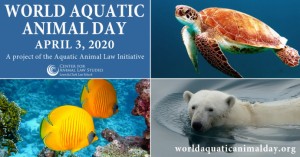
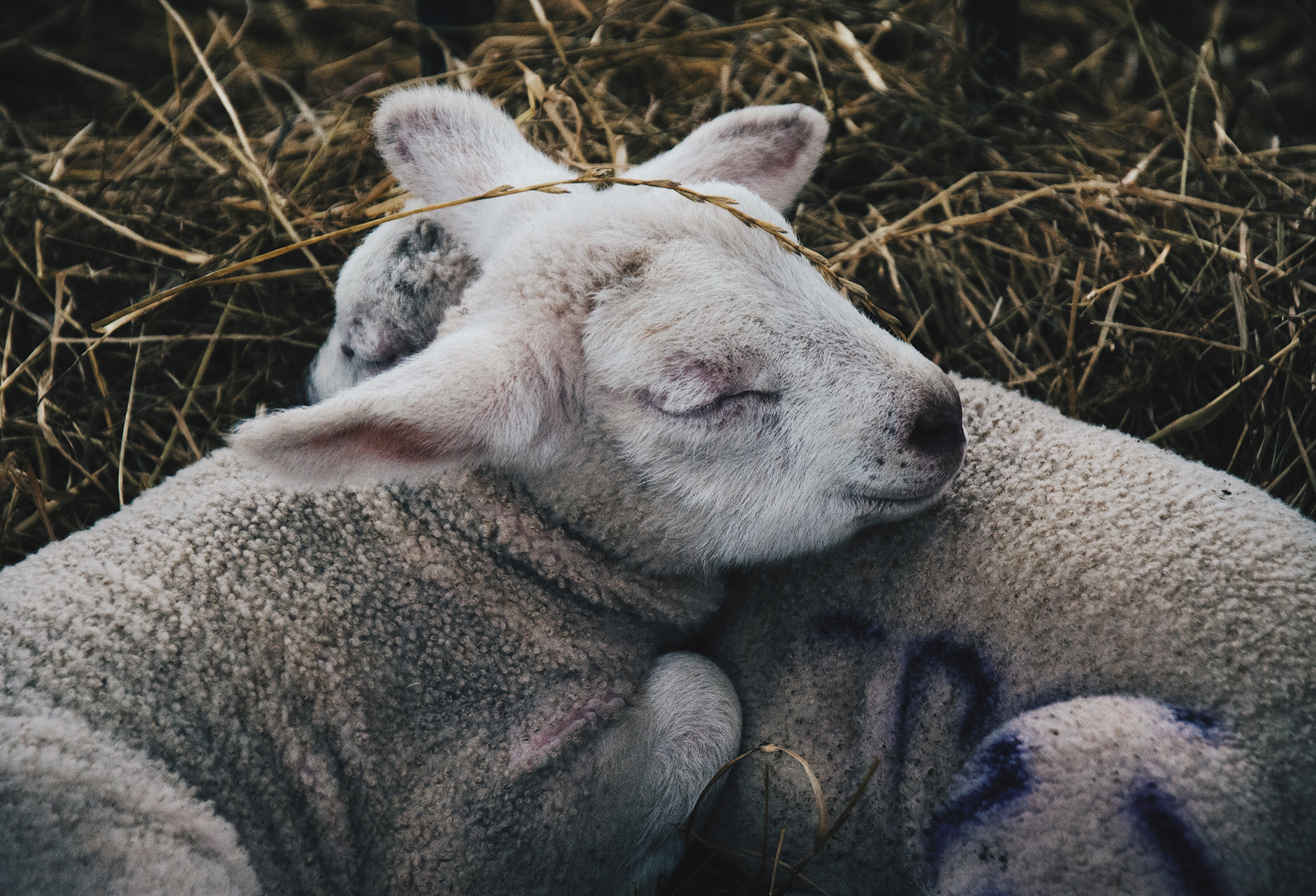 After nearly 50 years of raising and killing animals for food, farmer Sivalingam Vasanthakumar of Devon, England, had a dramatic change of heart. While taking 20 lambs to the slaughterhouse, he turned around and drove them nearly 200 miles, delivering them instead to the 92-acre Goodheart Animal Sanctuaries. “I just couldn’t cope any more and I had to say no,” he said, noting that he had made the same journey many times before and could always sense the terror the lambs felt. “They would try to hide in the back of the trailer and wouldn’t want to come out. I would have to push them out, it was very stressful for me and the animals.” He said he’s a vegetarian now and will grow vegetables rather than raise animals. Goodheart manager Dave Bourne said this was the first time a farmer had brought lambs to the sanctuary.
After nearly 50 years of raising and killing animals for food, farmer Sivalingam Vasanthakumar of Devon, England, had a dramatic change of heart. While taking 20 lambs to the slaughterhouse, he turned around and drove them nearly 200 miles, delivering them instead to the 92-acre Goodheart Animal Sanctuaries. “I just couldn’t cope any more and I had to say no,” he said, noting that he had made the same journey many times before and could always sense the terror the lambs felt. “They would try to hide in the back of the trailer and wouldn’t want to come out. I would have to push them out, it was very stressful for me and the animals.” He said he’s a vegetarian now and will grow vegetables rather than raise animals. Goodheart manager Dave Bourne said this was the first time a farmer had brought lambs to the sanctuary. Canada’s House of Commons passed the Ending the Captivity of Whales and Dolphins Act, known colloquially as the “Free Willy” bill, which was introduced in December 2015. It bans keeping whales, dolphins, and porpoises in captivity and bans their use in performances. Cetaceans who are already in captivity are grandfathered in by the bill, however, meaning Marineland in Niagara Falls, Ontario, can keep
Canada’s House of Commons passed the Ending the Captivity of Whales and Dolphins Act, known colloquially as the “Free Willy” bill, which was introduced in December 2015. It bans keeping whales, dolphins, and porpoises in captivity and bans their use in performances. Cetaceans who are already in captivity are grandfathered in by the bill, however, meaning Marineland in Niagara Falls, Ontario, can keep 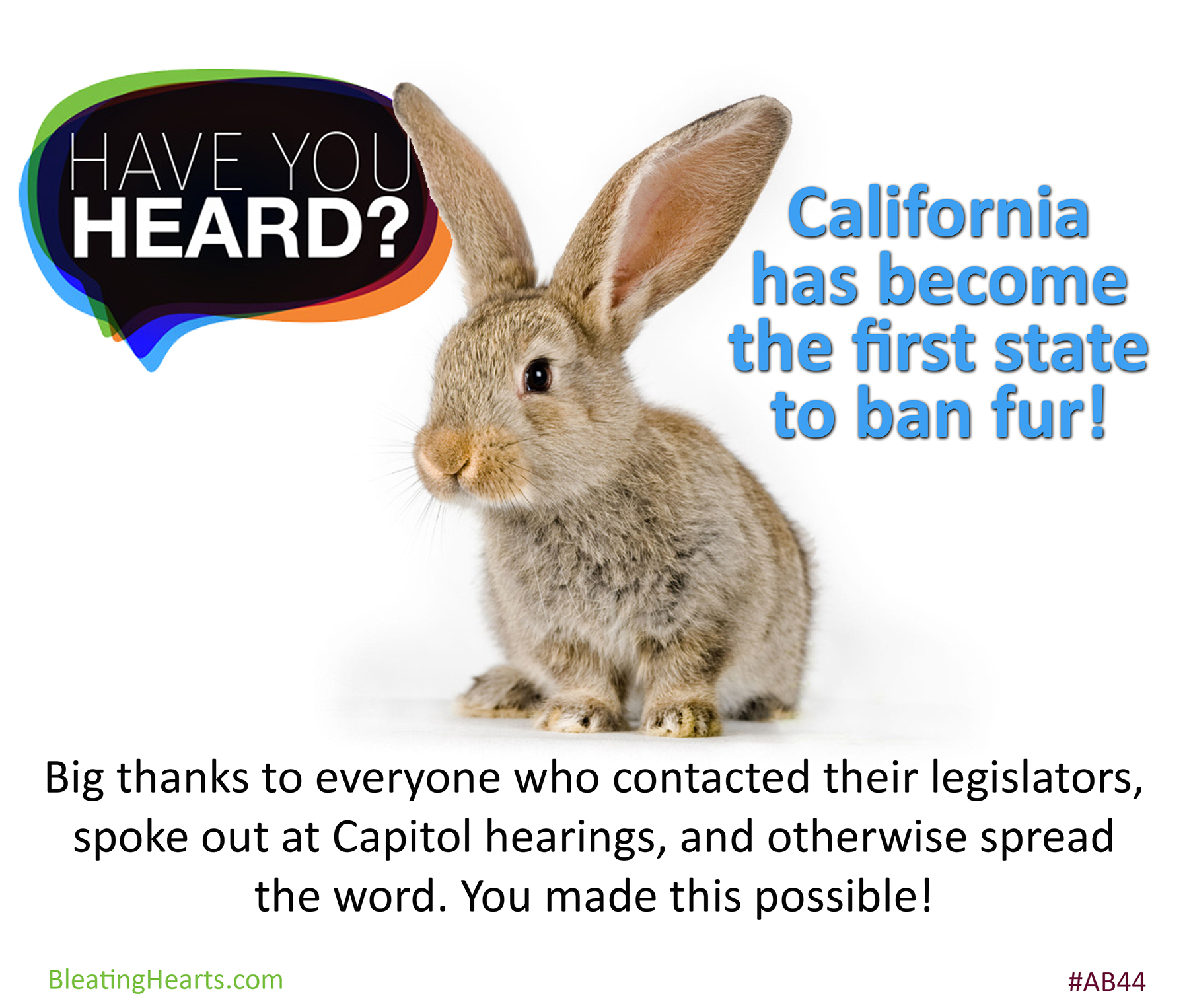 Just weeks after banning fur trapping, California took an even bigger step into a compassionate future by banning the manufacture, sale, and display of clothing, shoes, slippers, hats, keychains, or handbags with fur. After signing it, Gov. Newsom
Just weeks after banning fur trapping, California took an even bigger step into a compassionate future by banning the manufacture, sale, and display of clothing, shoes, slippers, hats, keychains, or handbags with fur. After signing it, Gov. Newsom 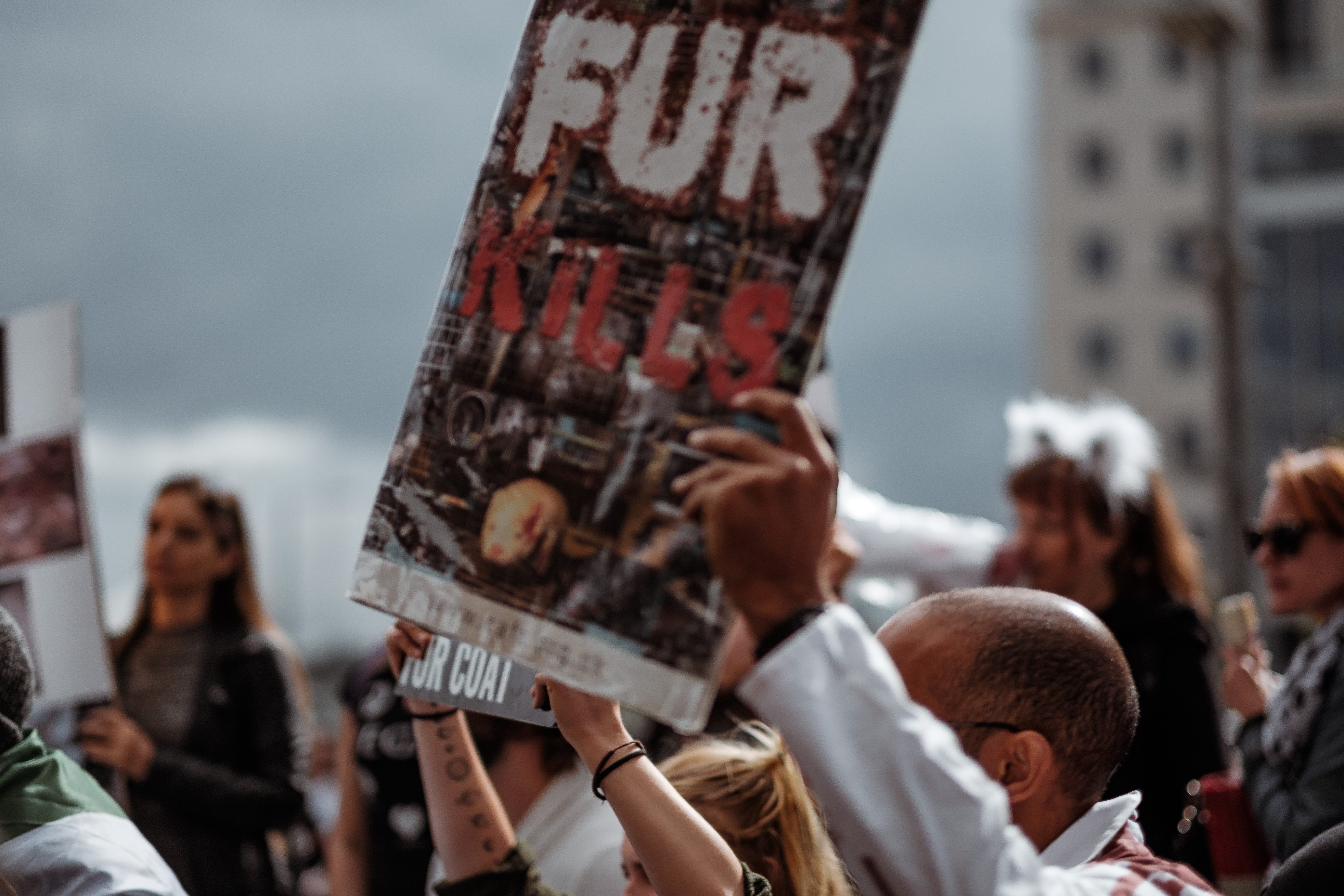 There has been a lot of great news about animal-based fur in the last couple of years. Not only did California just become the first state in the U.S. to ban the production and sale of fur, but it banned fur trapping. New York City is also considering a ban on fur sales. Macy’s and Bloomingdale’s made headlines this month when they announced they would no longer sell fur, adding their names to an ever-growing list of department stores, designers, and fashion houses—including Burberry, Calvin Klein, Georgio Armani, Gucci, Michael Kors, Prada, and Ralph Lauren—that have gone fur-free. In 2018, designer Donatella Versace, long known for her support of fur,
There has been a lot of great news about animal-based fur in the last couple of years. Not only did California just become the first state in the U.S. to ban the production and sale of fur, but it banned fur trapping. New York City is also considering a ban on fur sales. Macy’s and Bloomingdale’s made headlines this month when they announced they would no longer sell fur, adding their names to an ever-growing list of department stores, designers, and fashion houses—including Burberry, Calvin Klein, Georgio Armani, Gucci, Michael Kors, Prada, and Ralph Lauren—that have gone fur-free. In 2018, designer Donatella Versace, long known for her support of fur, 

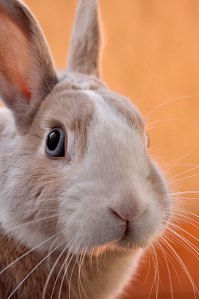
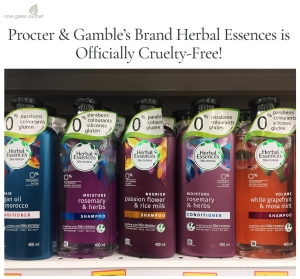
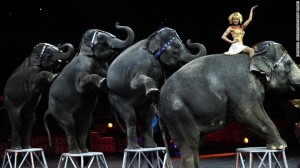


You must be logged in to post a comment.